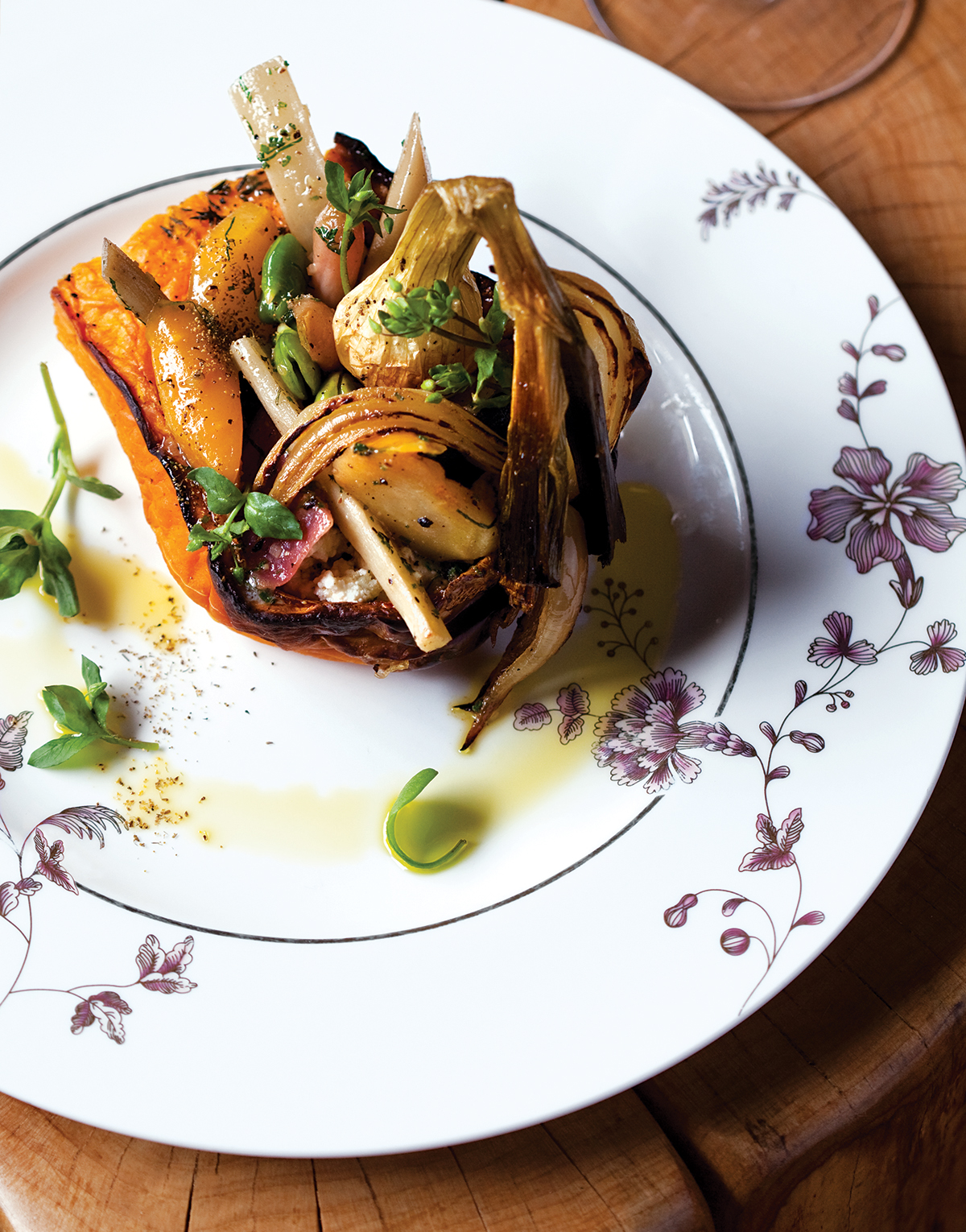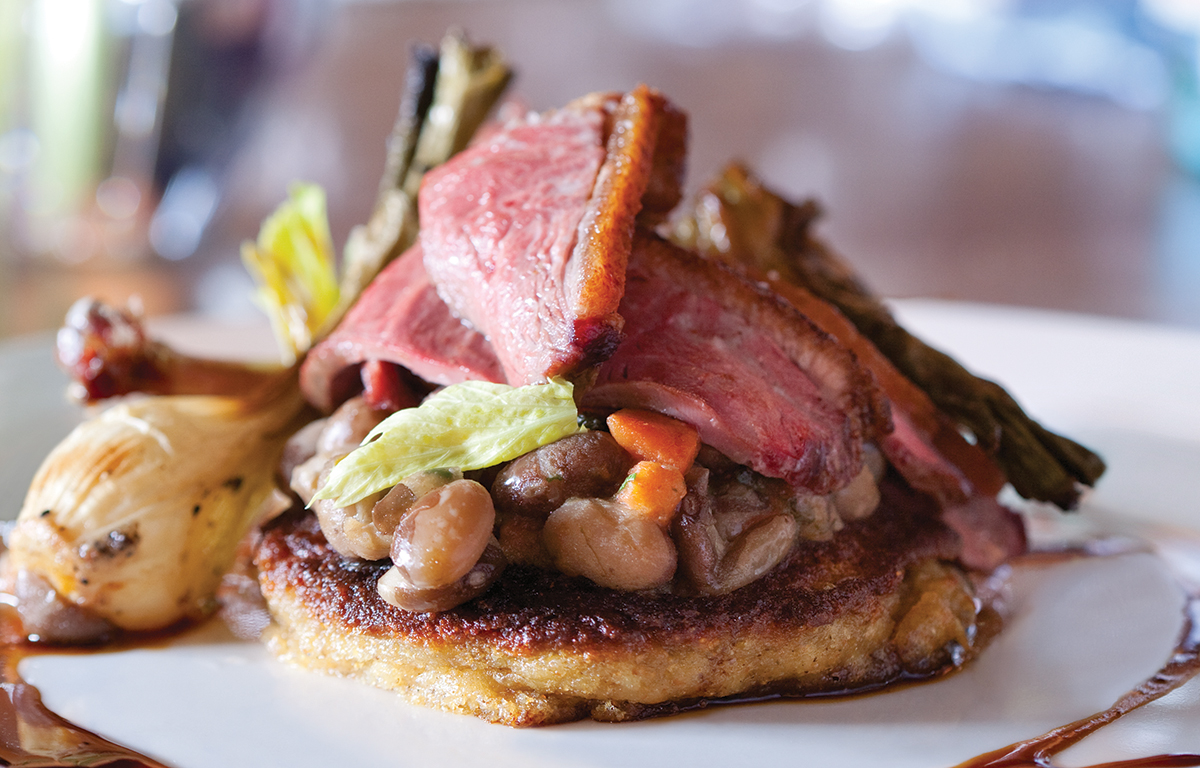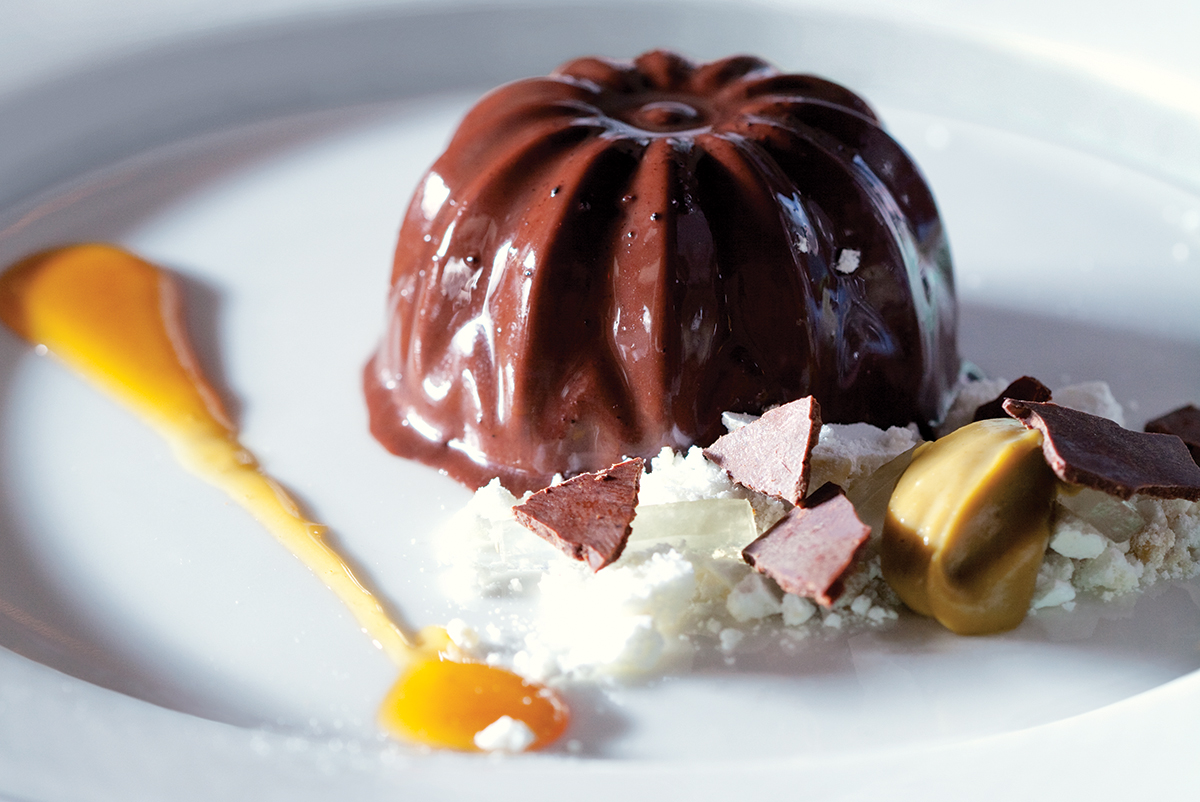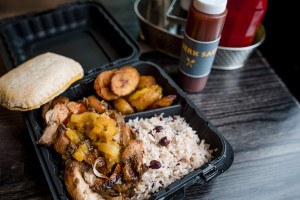Restaurant Review: Bondir in Cambridge

Roasted butternut squash with Keener corn grits, vegetable mignardises, and mustard oil, $12/$13. Photograph by Keller + Keller.
With Bondir, Jason Bond joins the ranks of our top artisan chef-owners. His intimate restaurant deserves to be a place of pilgrimage for visiting and local foodies alike.
There’s nothing showy about the place, located on a sleepy, mostly commercial block near Kendall Square. The small storefront’s lovely glass-windowed fireplace in the front and pillow-accented seating nook are practically the only real decoration. It’s spare and pleasant here, not noisy. The focus is entirely on the food.
And the food merits that kind of attention. In its humble way, Bondir serves some of the most elegantly conceived and executed dishes in the area. Bond manages to avoid the overwrought pretension that runs through too much of the current farm-to-table approach. Even if he doesn’t get every part of every offering just right, he nails the attitude.
Two interrelated dishes brought that home for me. The first was red wine–braised hen with Vidalia onion, calypso beans, and white-flint cornmeal cake ($15 for a half portion, $28 for a full — a wonderful policy I wish every chef would adopt, because it lets a group of four taste pretty much every item on a night’s menu). The wording is careful: “Hen” doesn’t refer to chicken you get in the supermarket. Bond’s come from Pete & Jen’s Backyard Birds in Concord. They’re stewing hens, two or three years old rather than the usual six to nine months, and at the end of the most productive part of their egg-laying life — the kind of specimens that gave rise to the expression “tough old bird.” The meat seems dry, shrunken, chewy, and dark compared with the Michelin Man birds we’re used to. But if you think of it as game — and game that needs some allowances (pigeon, quail, and the like on menus are farm-raised specifically to be served, and therefore not subject to lives of hard labor) — the flavor rewards are great. The roasted juices, which Bond uses to sauce the floury-textured fresh calypso beans, permeated the corn cake (lighter than a johnnycake but just as full of corn taste). The plate was like a farm-to-table version of chicken and waffles.
Bond knows how to run a frugal kitchen, as he shows with my favorite offering: buckwheat tagliatelle with celery simmered in pu-erh (an aged tea); braised chicken; ricotta; and olive oil–toasted breadcrumbs ($13/$24). Though not strictly an Italian preparation, it’s an example of how an Italian farm cook would make pasta: using the leftover shredded meat and pan drippings from yesterday’s roast. The homemade pasta, prepared with nutty buckwheat from Barker’s Creek Mill in Rabun Gap, Georgia, had marvelous taste (though, as with the hen, there was a slight tradeoff in chewiness). It’s a masterly dish, yet truly rustic, with homemade ricotta, tea-steeped celery, sweet local spinach, and whey from the ricotta that lent a luxurious thickness to the sauce.
Bond grew up in Wyoming and Kansas with farmers and artists, and absorbed the kitchen lessons of his grandmothers before learning of a more exalted kind from Ken Oringer and Barbara Lynch and, at an early and clearly formative job, from George Germon and Johanne Killeen at Al Forno. His background led to a personal philosophy, which he brought up in regard to Pete & Jen’s: Once a month he assists with the slaughtering, because “you should put in a day’s labor to help someone who needs it.”

Bondir’s spare but lovely entryway hints at the truth: The focus here is on food. Photograph by Keller + Keller.
On display in the restaurant is a blown-up charcoal portrait (done by Bond’s grandfather) of a distinguished breed of pig: the Mangalitsa, currently the breed of choice in the nationwide cult of swine. It’s prized for its high fat content, which Bond turns into home-cured lardo. At my dinners he draped it over two first courses: burrata with shaved vegetable salad, pistachio vinaigrette, and aniseed
tuile ($14/$26); and seared baby artichokes, Berkshire pork, fava beans, and greenhouse lettuces ($14/$26). I’ve had lardo with more flavor — his is pretty bland — but the fat was impeccable, and lent a welcome richness to the artichokes.
You’d expect someone so farm-oriented to be good with vegetables, and Bond certainly is: The ones with the burrata made winter seem fresh, and Bond sprinkled pollen (from fennel flowers he bought last season) over the plate. (He says he takes a snout-to-tail approach to edible plants, too.) But it was the pork that made both dishes — particularly the big, square lardons, slightly smoky and very porky, served over the artichokes. Those lardons ought to be used as often as the lardo, even if Bond doesn’t always help raise the pig.
Because I’m so sympathetic to Bond’s sensibility, I’m at risk of overselling. So I’ll say that if you’re someone who wonders what the big deal is about fresh-local cuisine, and you’re unwilling to make allowances for subtle flavor, you could come away disappointed, as I did with several selections. Wagyu brisket sauerbraten with roasted fingerling potatoes and braised sauerkraut ($15/$28) seemed dry and stringy, even though the Wagyu, a luxuriously fatty meat, was braised for hours in wine vinegar with spices; likewise, the potatoes were dry and mealy. Quinault River steelhead ($16/$30), a spring-run fish from Washington state, was a rare seasonal treat but low in flavor; a homemade pickle — the current de rigueur — of nail-size Japanese mushrooms and bean sprouts (grown at Red Fire Farm in Granby) helped. The roasted rutabaga that came with it sounded unappealing but did have a depth thanks to the beef fat in the roasting pan. Meanwhile, a disk of roasted butternut squash was the best part of a dish that also included teff polenta and mustard oil ($12/$23); the teff just seemed like mush. Grits with the same squash on another night were a much better match.
But I’m a sucker for most anything heirloom, such as those grits. And for the nutty, fresh flavor of the flours Bond uses — most from Four Star Farms in Northfield — in the breads he’s teaching himself to make with admirable results (pray he’s serving the cranberry-walnut when you go). As for the expertise he acquired during a year cooking for the L. A. Burdick restaurant at its New Hampshire headquarters? He puts that to use in the best dessert, chocolate panna cotta ($10), the most delicate but deeply chocolaty pudding you’ll ever have.
Bond continues to learn each night. But this is a chef who’s grown enormously during his years on farms and in restaurants. I’ll make Bondir a mark on my own growth chart, too.
MENU HIGHLIGHTS:
Mallard duck with Vidalia onion, calypso beans, and white-flint cornmeal cake, $15/$28.
Roasted squash bisque with ras el hanout, marshmallow, bee pollen, and caramelized shallots, $9
Chocolate panna cotta with pistachio puree, bergamont gelee, dacquoise, and cocoa-nib croustillant, $10
Plus | Handmade burrata, $14/$26 | Seared baby artichokes, $14/$26 | Buckwheat tagliatelle, $16/$30
Bondir, 279A Broadway, Cambridge, 617-661-0009, bondircambridge.com.
Critic Corby Kummer—an editor at the Atlantic and author of The Pleasures of Slow Food—has been reviewing Greater Boston’s top restaurants in our pages since 1997.





